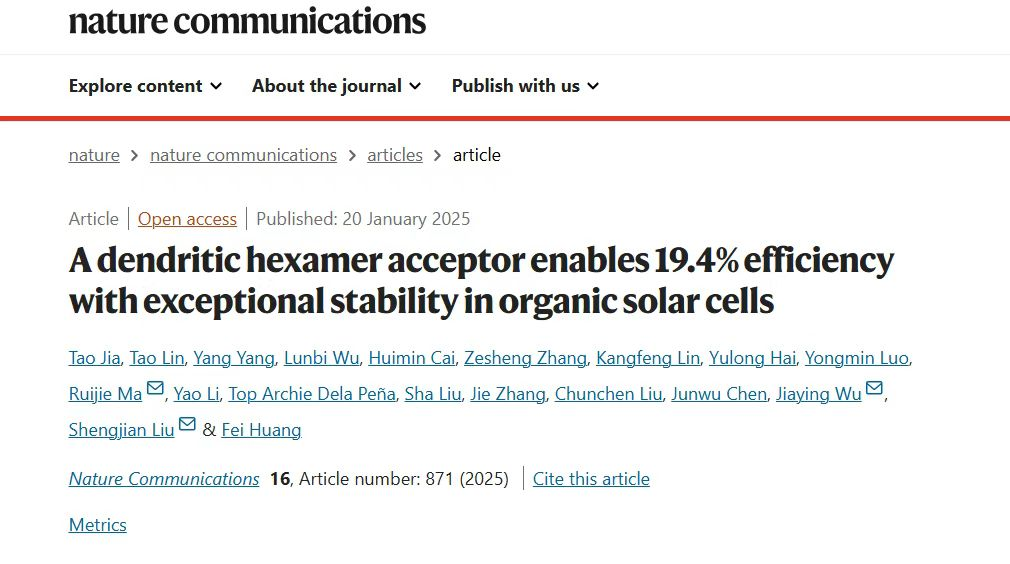In January 20, a major breakthrough in the field of organic solar cells, led by Associate Professor Tao Jia from the School of Optoelectronic Engineering, was published in Nature Communications. The paper is titled “A Dendritic Hexamer Acceptor Enables 19.4% Efficiency with Exceptional Stability in Organic Solar Cells.
Organic solar cells (OSCs), with their unique advantages such as light weight, mechanical flexibility, semi-transparency, and compatibility with roll-to-roll solution processing, have emerged as a promising technology for a broad range of specialized applications and as a complementary alternative to conventional silicon-based solar cells. Despite significant progress in power conversion efficiency, achieving long-term operational stability remains a major challenge. One of the primary limiting factors is morphological degradation of the active layer, largely driven by the crystallization of its components—particularly non-fullerene small-molecule acceptors—which severely compromises device stability.
To address this issue, Associate Professor Jia’s team employed an alkyl chain-linking strategy to successfully develop a novel dendritic non-fullerene acceptor, named Six-IC, with a high production yield of 58%. Owing to its high molecular weight exceeding 10000 g/mol and enhanced intermolecular interactions, the molecular diffusion of Six-IC was effectively suppressed, leading to significantly improved long-term storage and thermal stability of the devices. As a result, the D18:Six-IC-based device achieved a record-breaking power conversion efficiency (PCE) of 19.4% and retained over 94.2% and 98.0% of its initial efficiency after 1200 hours of thermal annealing at 85 °C and ambient storage, respectively. This work presents an innovative and practical strategy for designing acceptor materials that combine high efficiency with excellent stability, thereby reducing production costs and advancing the commercial viability of organic solar cells.

This work was led by Guangdong Polytechnic Normal University as the primary completing institution, in collaboration with The Hong Kong Polytechnic University, The Hong Kong University of Science and Technology, South China Normal University, and South China University of Technology. Associate Professor Jia served as the first author of the study. The research team also included graduate students Tao Lin and Lunbi Wu, as well as undergraduate students Yang Yang, Huimin Cai, and Kangfeng Lin. The project was supported by the National Natural Science Foundation of China, the Natural Science Foundation of Guangdong Province, and the Talent Recruitment Program of Guangdong Polytechnic Normal University.